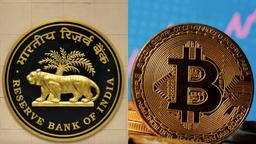FinTech, or financial technology, is the use of innovative and disruptive technologies to offer better, faster, and cheaper financial services. FinTech has been growing rapidly in India, thanks to the supportive policies, infrastructure, and demographics of the country.
- Blogs
- Finance & Banking
- Fintech Vs Traditional Banking The Indian Scenario 6526a2c614e5bf0001289283
FinTech vs Traditional Banking: The Indian Scenario
Finance & Banking • 11 Oct, 2023 • 23,776 Views • ⭐ 5.0
Written by Anand Swami

FinTech startups are challenging the traditional banking sector by offering more convenient, accessible, and personalized solutions to customers. In this blog, we will evaluate the growth of FinTech startups in India and how they are changing the dynamics of traditional banking.
Growth of FinTech Startups in India

India is one of the fastest-growing FinTech markets in the world, with over 2100 FinTech startups operating in various segments such as payments, lending, wealth management, insurance, and blockchain. According to a report by BCG, the Indian FinTech market is expected to reach more than $190 billion by 2030. Some of the factors that have contributed to the growth of FinTech startups in India are:
FINANCE & BANKING QUIZ • 10 QUESTIONS • 2 MINS
We've got a Finance & Banking quiz for you!
TAP TO PLAY

- The digital transformation of the economy is driven by initiatives such as Aadhaar, UPI, GSTN, and India Stack.
- The rising demand for financial inclusion, especially among the unbanked and underbanked segments of the population.
- The increasing adoption of smartphones, internet, and social media among the young and tech-savvy customers.
- The surplus of capital available from domestic and foreign investors, who see the potential of FinTech in India.
How FinTech is Changing Payments

Payments is one of the most mature and competitive segments of FinTech in India, with players such as Paytm, PhonePe, Google Pay, and Amazon Pay dominating the market. FinTech has transformed the way people pay for goods and services, by offering:
- Convenience and speed: Customers can make instant and seamless payments using their mobile phones, without the need for cash or cards.
- Security and transparency: Customers can track their transactions and get real-time notifications using biometric authentication and blockchain technology.
- Incentives and rewards: Customers can get cashback, discounts, coupons, and loyalty points for using FinTech payment platforms.
How FinTech is Changing Lending

Lending is another segment where FinTech has made a significant impact, by offering alternative sources of credit to individuals and businesses. FinTech has changed the way people borrow money, by offering:
- Accessibility and affordability: Customers can access credit from anywhere and anytime, without the need for collateral or lengthy documentation. FinTech lenders also offer lower interest rates and fees than traditional banks.
- Personalization and flexibility: Customers can get customized loan products based on their needs, preferences, and credit profiles. FinTech lenders also offer flexible repayment options and moratoriums during emergencies.
- Innovation and diversification: Customers can get new types of loans such as peer-to-peer lending, invoice financing, crowdfunding, and crypto lending. FinTech lenders also cater to niche segments such as women entrepreneurs, students, farmers, and MSMEs.
How FinTech is Changing Wealth Management

Wealth management is a segment where FinTech has been gaining traction recently, by offering digital platforms for investing and saving money. FinTech has changed the way people manage their wealth, by offering:
- Democratization and education: Customers can access a variety of investment options such as mutual funds, stocks, bonds, gold, and cryptocurrencies. FinTech platforms also provide financial literacy and guidance to help customers make informed decisions.
- Automation and optimization: Customers can use robo-advisors and algorithms to create personalized portfolios based on their risk appetite and goals. FinTech platforms also use artificial intelligence and machine learning to optimize returns and minimize risks.
- Engagement and gamification: Customers can interact with other investors and experts through social media and communities. FinTech platforms also use gamification techniques such as quizzes, challenges, badges, and leaderboards to make investing fun and rewarding.
How FinTech is Changing Insurance

Insurance is a segment where FinTech has been disrupting the traditional players by offering digital solutions for protection and risk management. FinTech has changed the way people buy insurance policies by offering:
- Simplicity and transparency: Customers can compare and buy insurance policies online using simple language and clear terms. FinTech platforms also provide instant quotes, claims processing, and policy management using chatbots and blockchain technology.
- Customization and personalization: Customers can get tailored insurance products based on their needs, preferences, and behaviour. FinTech platforms also use data analytics and telematics to offer dynamic pricing and discounts based on the customer’s risk profile.
- Inclusion and empowerment: Customers can get access to insurance products that are otherwise unavailable or unaffordable in the traditional market. FinTech platforms also enable customers to share and pool risks with other like-minded individuals through peer-to-peer insurance and microinsurance.
Conclusion
FinTech has been transforming the banking sector in India by offering innovative and disruptive solutions that are better, faster, and cheaper than the traditional players. FinTech startups have been growing rapidly in India, thanks to the supportive policies, infrastructure, and demographics of the country.
FinTech has been changing the dynamics of payments, lending, wealth management, and insurance by offering convenience, accessibility, personalization, and incentives to customers. FinTech is the future of banking in India, and the traditional players will have to adapt or collaborate with the FinTech startups to survive and thrive in the digital era.
Rate this article
Other articles you may like
Financial Inclusion in Rural India: The Role of Microfinance and Small Finance Banks
Finance & Banking • 10 Oct, 2023 • 24,750 Views

The Evolution of Central Banks: From Gold Reserves to Cryptocurrency
Finance & Banking • 9 Oct, 2023 • 23,015 Views

Demystifying the Digital Payment Ecosystem in India
Finance & Banking • 9 Oct, 2023 • 22,771 Views





